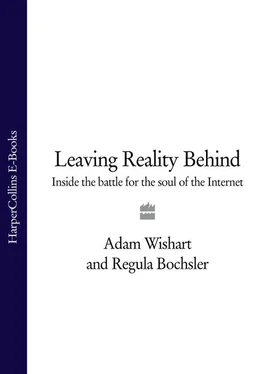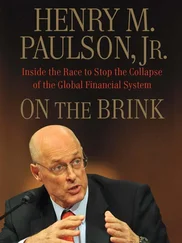There were already other browser developers at work but none shared Andreessen and Bina’s single minded determination. Nor could they match the speed of their codewriting or focus on creating new features to meet the demands of the users. Mosaic would come to dominate the Internet. In the free-for-all of the Internet, the ability to put out software that worked trumped everything else.
Andreessen wasn’t content just to work within the Standards that Berners-Lee had created – he wanted to extend them. Just a month after releasing his first browser, he proposed that it should be possible to view images in the midst of documents. Berners-Lee suggested that it would be better if the images were a hyperlink that when clicked would open up in a separate window. Two weeks later Andreessen announced his unilateral decision to display images in his forthcoming browser Mosaic. He wrote, ‘I don’t see an alternative [to this other] than to … wait for the perfect solution to come along.’
In March of 1993, Tim Berners-Lee happened to be in Chicago. He thought it would be interesting to meet the new enthusiasts for his Web a couple of hours away in Urbana-Champaign. There, in the Center’s basement meeting room, Andreessen and Berners-Lee and their various allies sat face to face.
The purpose of the meeting was ostensibly to agree further extensions to Berners-Lee’s Standards, but beneath the surface of their discussion bubbled genuine hostility between the protagonists. Tim Berners-Lee later remembered it with discomfort: ‘All my previous meetings with browser developers had been meetings of minds, with a pooling of enthusiasm. But this meeting had a strange tension to it.’ For Berners-Lee the universal system that he had created seemed as if it was about to be taken over by a group determined to claim it as their own. Also at the meeting was Tom Bruce, a researcher from Cornell University, who had travelled to Urbana-Champaign with Berners-Lee. When he surprised the Andreessen team by announcing that he was writing the first browser for the Windows operating system, he sensed that he was now characterised as competition (rather than a fellow collaborator) and as such he was the foe to be beaten.
Joseph Hardin, then Andreessen’s boss, recalled that Berners-Lee was upset. ‘This was one of the first times that he really saw the group that was moving so fast. And the technology was taking on a life of its own. It’s like a parent who sees a child grow up all of a sudden. We were playing with his baby.’ Hardin and his team had no qualms about being competitive; they thought that they could be really successful only if their software was adopted by huge numbers of computer users.
The young hacker and the older researcher had very different personalities. Tim Berners-Lee was idealistic, he wanted to create a common standard for sharing information. As Dale Dougherty describes him, ‘Tim wants to talk about ideas, and get you excited about them, rattling through them so fast, he doesn’t care for nuts if you get them all and he doesn’t necessarily care to sell you on something.’
Andreessen was quite different, he was a champion, a salesman, challenging people, and arguing with them. Forceful, determined, persuasive and desperate to push ideas in exactly the directions that he chose. Even his boss at the time, Joseph Hardin, describes his arrogance, ‘He very much felt that he was the leader of the thing.’
On leaving this first meeting in Illinois, Berners-Lee felt that his Web was in danger of fatally fracturing, because Andreessen’s team was running ‘single-handedly’ towards the goal line. As he recalled: ‘Evidence was mounting that “the Web” could splinter into various factions – some commercial, some academic; some free, some not. This would defeat the very purpose of the Web: to be a single, universal accessible Hypertext medium for sharing information.’
To prevent this, soon afterwards Berners-Lee released the Standards under a ‘public license’ which meant that the World Wide Web could never be controlled by a single institution or corporation. He also established the World Wide Web Consortium, a not-for-profit organisation whose sole purpose is to guard the Standards that make the Web work. This was in order to guarantee that the Standards would not be perverted by corporations seeking to extend them to the exclusion of other users, and as a way of preventing any individual, including Berners-Lee himself, from profiting from his innovation.
In various subsequent meetings, tension continued to be felt between the consensual Tim Berners-Lee and the determined and singular Marc Andreessen. Observers describe the young hacker’s behaviour as childish, with his wisecracking to the sniggers of his team, making sarcastic, deprecating comments about his elders, and ‘we are going to conquer the world’ attitude. Nonetheless, this gung-ho spirit did inspire incredible productivity from the Mosaic team. During 1993 the Mosaic Web browser was released first for Windows and then Macintosh – and it was the Mosaic browser that Hans and Herbert discovered via Franz Penz. The Web phenomenon had begun, and growth in traffic suddenly became exponential as new users flocked to the easy-to-use Internet. In the one year until the end of 1993, the number of Web sites grew from a few hundred to more than 10,000.
The opposing characters of the Web’s main protagonists did much for its ultimate success. While Tim Berners-Lee built the Web, safeguarded the Standards and kept order, the younger Marc Andreessen made a compelling browser and fought aggressively to make the World Wide Web a simple, accessible technology.
Marc Andreessen went on to set up a corporation that made browsers – and in doing so became the first of the boyish Internet millionaires, a role model for a new generation of entrepreneurs using the Internet as a platform for profit. For their cover, Time magazine placed him barefoot on a gold throne – the rebel king.
By contrast, Tim Berners-Lee adopted the role of consummate politician, defending his creation from avaricious colonisation by any commercial interest. Fortune magazine in turn depicted him as Saint Tim. Always the European, he would later write, ‘Many people ask why I didn’t commercialize the Web. It’s a strange question. By asking the question, people are suggesting that they respect people as a function of their net worth. That’s worrying. It’s not an assumption I was brought up with; and it is disturbing, the extent to which it pervades [the USA].’
Without these two notes the Web phenomenon could not have had such explosive resonance. What Berners-Lee and Andreessen achieved was remarkable: despite the anarchistic sensibility of the Internet community, they had built order, a set of common rules that was widely adopted because nobody owned or controlled it. Yet the Web would not have been so massive had a singular individual and the company that he became part of not dominated the process in the first years. This struggle between self-interest and public good, between wilful individualism and determined collectivism, was the defining conflict of the birthing of Web technology. This conflict would set the framework for and determine the path of many others of the coming years.
From Vienna, Hans and Herbert quickly communicated their discovery of the World Wide Web to the other members of the gang. ‘A world opened up to me that I did not know existed. It was like a parallel universe, and it seemed to be incredibly huge,’ says Franco. ‘I had this impression despite the fact that there was almost exclusively university stuff up there.’ Almost immediately, the group came to see the Internet as more than a vehicle for simple communication – they began to realise that it was a medium through which they could define their identity.
Читать дальше











